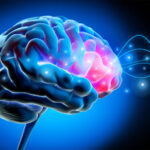A new study published in the Journal of Attention Disorders has revealed key factors linked to maladaptive daydreaming in neurodivergent adults. Emotional dysregulation, internalized stigma, escapism, and self-esteem emerged as significant predictors, varying across individuals with autism spectrum disorder, ADHD, and both diagnoses. These findings offer insights into how neurodivergent individuals use vivid daydreaming as a coping mechanism for emotional and social challenges.
Maladaptive daydreaming is a condition in which individuals engage in excessive, vivid, and immersive fantasies that interfere with their ability to function in daily life. Unlike ordinary daydreaming, which is often brief and inconsequential, maladaptive daydreaming is characterized by a loss of control, where individuals feel compelled to spend hours absorbed in their imagined worlds. This behavior frequently disrupts important activities, such as work or relationships, and can cause significant distress.
The researchers conducted this study to explore the underlying factors contributing to maladaptive daydreaming, particularly in neurodivergent individuals. Previous studies suggested that conditions such as autism spectrum disorder and ADHD are associated with higher rates of maladaptive daydreaming, but the reasons for this connection remained unclear.
The team sought to examine how emotional dysregulation, internalized stigma, escapism, and self-esteem contribute to the condition, aiming to identify patterns specific to these neurodivergent populations. They also aimed to compare how these factors interact across groups with autism, ADHD, and both diagnoses (referred to as AuDHD) to better understand the unique challenges faced by individuals with different neurodevelopmental conditions.
“Maladaptive daydreaming is a relatively new and understudied area of research, although it is gaining more recognition among researchers and the general population, especially online,” said study author Anna Pyszkowska of the University of Silesia in Katowice.
“There is some research about maladaptive daydreaming and its correlations with autistic or ADHD traits, but no study has investigated these aspects simultaneously. We wanted to see if there are significant differences in maladaptive daydreaming rates in these populations. Additionally, we wanted to examine whether individuals on the autism spectrum, with ADHD, or with AuDHD vary in how they experience maladaptive daydreaming, including whether there are different predictors.”
The researchers conducted their study by recruiting participants who had been formally diagnosed with autism spectrum disorder, ADHD, or both conditions. Participants were primarily recruited online through neurodivergent advocacy groups and mental health clinics in Poland. The sample included 139 individuals with ADHD, 74 with autism, and 80 with both diagnoses.
The study found that maladaptive daydreaming was similarly prevalent across all three groups, with 37% to 46% of participants meeting the criteria. However, the key factors contributing to the condition varied among the groups.
Emotional dysregulation emerged as a significant predictor of maladaptive daydreaming, particularly for individuals with autism. Difficulties in identifying and managing emotions were strongly linked to excessive daydreaming in this group, suggesting that daydreaming may serve as a coping mechanism for emotional challenges.
In contrast, among participants with ADHD, only certain aspects of emotional dysregulation, such as difficulty accepting emotional responses, predicted maladaptive daydreaming. This finding indicates that the role of emotional dysregulation differs based on the neurodevelopmental condition.
Escapism, particularly self-suppression escapism, was another consistent predictor of maladaptive daydreaming across all groups. This supports the idea that maladaptive daydreaming functions as a way to avoid negative emotions or difficult realities.
Internalized stigma, including feelings of alienation and social withdrawal due to societal judgment, was strongly associated with maladaptive daydreaming, especially among individuals with autism. These findings highlight the social and emotional burdens faced by neurodivergent individuals, which may drive them to retreat into fantasy worlds.
In terms of self-esteem, low self-competence was linked to maladaptive daydreaming in individuals with autism, while higher self-liking predicted lower levels of daydreaming in participants with ADHD.
Interestingly, while ADHD symptoms were more strongly associated with maladaptive daydreaming than autistic traits, individuals with both diagnoses displayed unique patterns. These participants exhibited higher levels of emotional dysregulation, internalized stigma, and self-suppression escapism compared to those with only ADHD or autism. This suggests that the interplay of symptoms from both conditions exacerbates the factors contributing to maladaptive daydreaming.
“The key takeaway is that maladaptive daydreaming is, in fact, associated with attention and emotion dysregulations, and can also be considered as one’s way of escaping from an unpleasant reality,” Pyszkowska told PsyPost. “The latter is additionally important in the neuroatypical population as they often experience stigma and discrimination that may lead to internalized stigma: a situation when you accept and internalize negative stereotypes about yourself and apply them to your own self-perception.”
“Our research showed that the more internalized stigma and dysregulation you experience, the more you want to escape from this reality into your daydreams. Interestingly, there were differences in predictions of maladaptive daydreaming in our three populations studied which showed that it is important to investigate these topics in complex ways.”
However, as with all research, there are some limitations. The sample size was relatively small, especially for the autism-only group, and participants were recruited online, which may have introduced bias. “The sample in this study may be biased as the invitation informed participants that the study was investigating daydreaming in the neurodivergent population,” Pyszkowska noted. “This may have led to the overrepresentation of maladaptive daydreamers, as the topic attracted their attention.”
Future research could address these limitations by including larger and more diverse samples. Further investigation into the content and functions of daydreaming, particularly how it varies across neurodivergent populations, would also provide deeper insights. Exploring potential interventions, such as emotion regulation training or stigma reduction programs, could help individuals manage maladaptive daydreaming more effectively.
The study, “The Daydream Spectrum: The Role of Emotional Dysregulation, Internalized Stigma and Self-Esteem in Maladaptive Daydreaming Among Adults With ADHD, ASD, and Double Diagnosis,” was authored by Anna Pyszkowska, Ari Nowacki, and Julia Celban.




